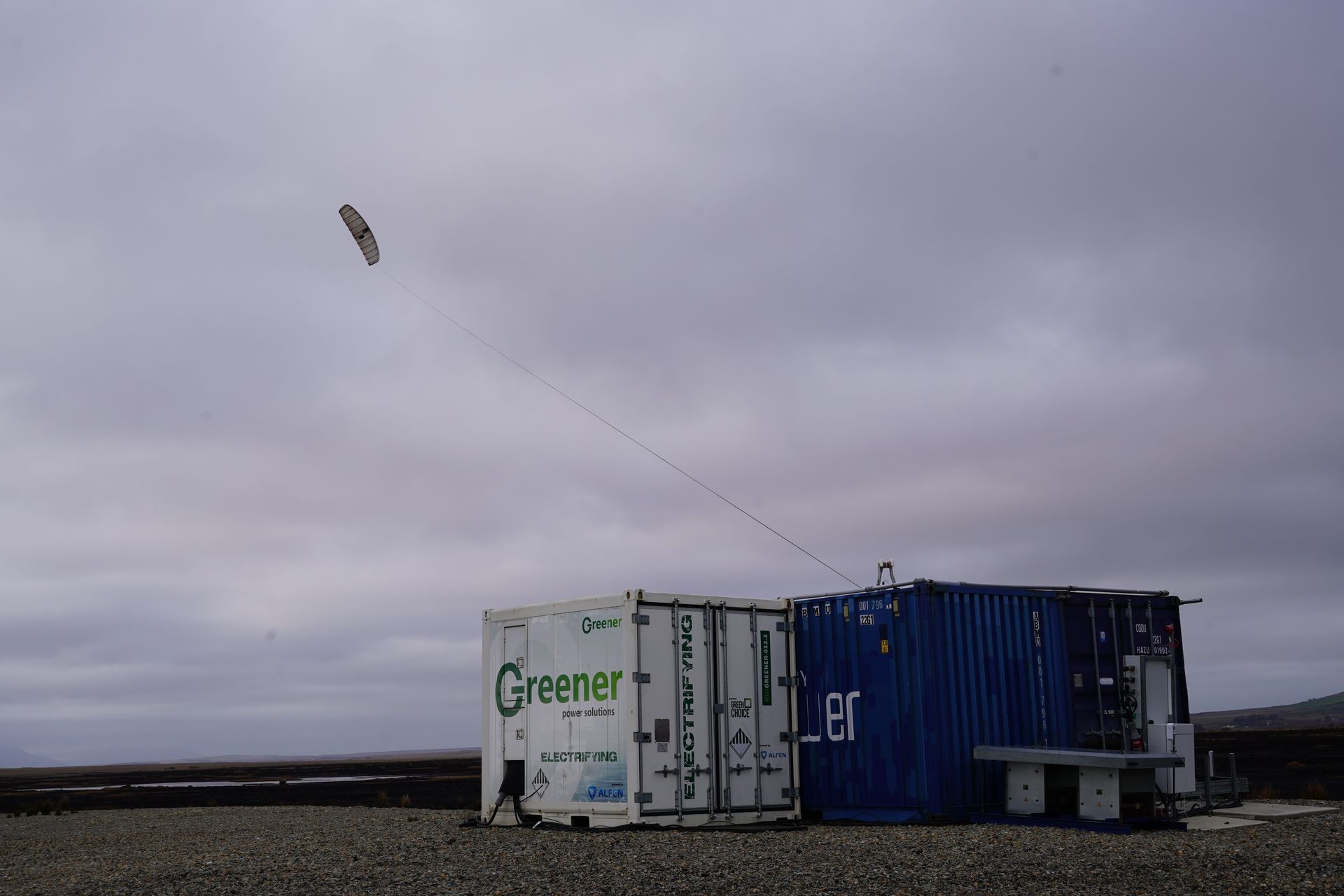On April 2, 2025, the DEM-AWE project partners hosted the second webinar on "Airborne Wind Energy in Ireland," gathering over 30 participants, including representatives from the Irish Aviation Authority, County Councils, the Sustainable Energy Authority of Ireland (SEAI), research institutes and other stakeholders.
Advancing AWE: Key insights
Kristian Petrick, Secretary General of Airborne Wind Europe, opened the session by emphasizing the association's work in shaping a regulatory and policy framework for AWE across the EU. He highlighted AWE benefits, including a low environmental footprint and the ability to harness high-altitude wind resources. "There is enormous potential in Ireland," Petrick stated, referencing the country’s suitability for AWE development.
Updates from the test site in County Mayo
Andrei Luca of Kitepower shared their progress on the Bangor Erris test site, where the company has conducted around 140 flights and employs three local staff. "Recently we completed five flights in a week," he said, adding, "and now we are focusing on flying longer flights and even two or three times per day if the testing campaign requires it." A DEM-AWE animation and real-flight video were also shown to illustrate the operational progress as well as a brief livestream of a flight from Bangor Erris.
Identifying AWE sites in Ireland
Then, Kristian Petrick presented findings from a GIS analysis, assessing viable AWE sites in Ireland. The report aims to help policymakers, regulatory bodies, and energy stakeholders, making informed decisions while guiding project developers towards the most promising locations.
The study identified 1,600–1,800 km² of deployment area and 9,300–10,700 km² of operational area, with nearly 6,000 sites and up to 24,000 devices, supporting up to over 30 GW of AWE capacity with a 425-meter tether length.
Petrick also showed how the tool appears in Google Earth, looking at potential sites, including different islands where Kitepower observed good conditions to fly, but it is still to be checked.
Future opportunities and next steps
Finally, it was time to talk about the future actions for AWE deployment in Ireland thanks to its favourable conditions and particularly with the backing of SEAI, County Councils, and the Irish Aviation Authority (IAA).
The Bangor Erris test site in County Mayo, originally developed under the Interreg NWE MegaAWE project in collaboration with RWE Ireland, Kitepower, Airborne Wind Europe, and others, has already led to local job creation in operations and maintenance.
Offshore prospects and technical challenges
During the Q&A and following up on offshore AWE, this topic emerged as a key discussion point. "AWE could start considering floating offshore from 2030 onwards. While we could technically start tomorrow, the primary challenge is reducing the cost of floating structures and cabling. It’s a technical problem but as we are progressing on improving our flight path, we should be able to bundle multiple systems near each other in the next few years, thus reducing the costs of system installation and maintenance" Luca explained.
Automation was another focal point. Kitepower systems operate in Ireland and the Netherlands under the EU drone regulations, requiring a pilot for setup, but take-off and landing are automated. "The system can fly with rain and snow," Luca underscored, noting that adjustments are made automatically in changing conditions.
Regarding operational permissions, Luca added, "We were initially authorised to fly from 8 AM to 6 PM, but after a year, we are now flying until 11 PM."
On the other hand, Petrick confirmed, "Kitepower is now operating in Ireland with its 30 kW K-BESS system, but the plan is to upgrade to 100 kW."
Conclusion
The DEM-AWE webinar highlighted Ireland’s strong potential for AWE, with expanding test sites and growing stakeholder support. Also note that interested parties can arrange visits to the Bangor Erris test facility by contacting Kitepower.
